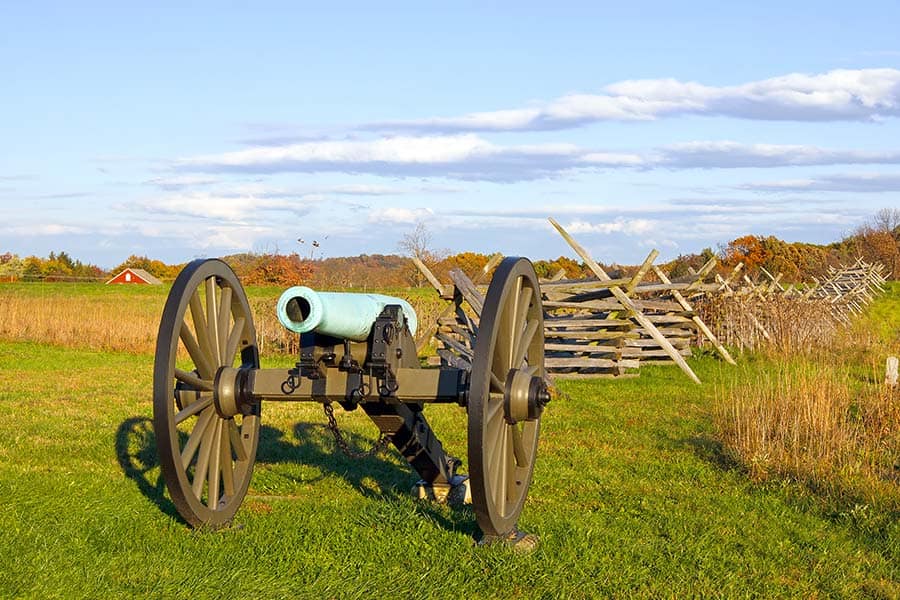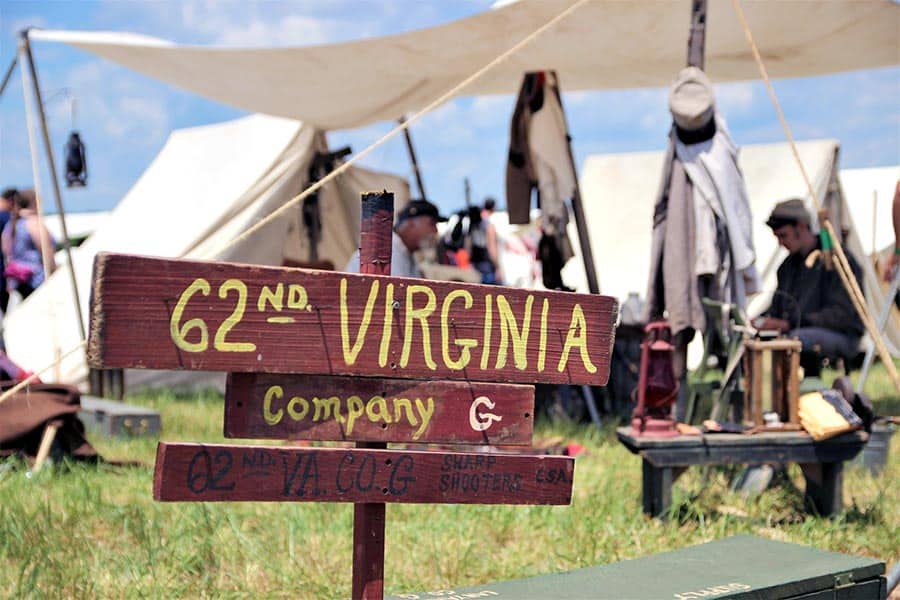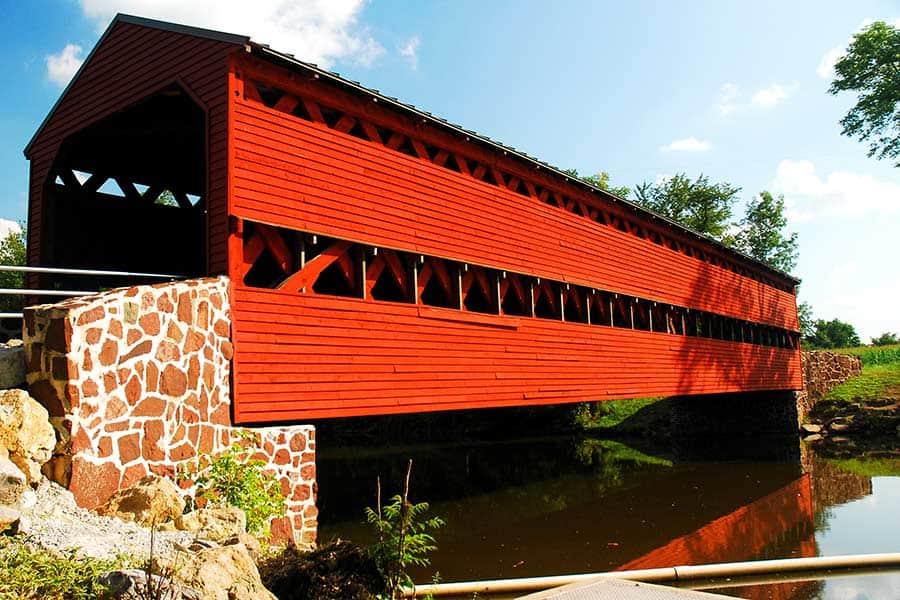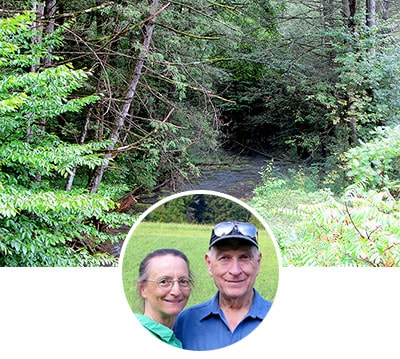
In southern Pennsylvania, a green field careens down a slight incline and is often covered in fog and mist in the morning. Though this field is now peaceful, it was once the location of the turning point of the Civil War. Gettysburg is a national landmark, but is it worth visiting?
Gettysburg is a must-see site in Pennsylvania, complete with museums and living history experiences that make it worth the visit. Gettysburg allows guests to discover and experience history in many ways, including guided walking, driving, horseback, and self-guided tours of this historical location.
Gettysburg forever changed the course of America and continues to stand as a place of learning and remembrance. The following sections will help visitors know exactly what they should do on a trip to Gettysburg.
The Rich Experience of Gettysburg
Gettysburg is located 10 miles inside Pennsylvania’s southern border. It is close to many large cities that are also popular tourist destinations. However, the nearest major cities are actually outside of Pennsylvania. Baltimore, Maryland, is 54 miles away, and Washington, DC, is 84 miles away, or about an hour and a half by car.
Some of the notable close cities within Pennsylvania are Hershey, which is only 52 miles from Gettysburg. Two of the biggest cities in Pennsylvania are also within a few hours of Gettysburg—Philadelphia is 118 miles away, while Pittsburgh is 180 miles away. Visitors that are visiting the chocolate capital of the world, watching a Pittsburgh Pirates game, or enjoying a famous Philly Cheesesteak can easily make the drive to Gettysburg for a rich historical experience.

Gettysburg is most worth a visit because of what happened there in 1863. The Battle of Gettysburg. Leading up to July 1863, Confederate General, Robert E. Lee, moved his army of 75,000 to Pennsylvania as he tried to take control of the Northern United States. Lee moved his forces to a place where ten roads converged—Gettysburg.
Union General George Gordon Meade moved his army of 95,000 toward Lee. Lee’s move north led to the largest battle in American history. The battle began on the first day of July 1863.
The Confederate Army began to push back the Union Army until the Union reformed on Cemetery Hill. On day two of the battle, the Confederates attacked the Union from all sides. For three days the Union Army withstood almost constant attacks that came in the morning, day, and night.
One of the most famous parts of the Battle of Gettysburg was Pickett’s charge. On the last day of battle, Major General George Pickett led the first brigade of around 15,000 Confederate soldiers in an attack of nearly 6,500 Union soldiers. Though outnumbered, the Union Army had the higher ground, and the Confederate Army had to charge across an open field. Nevertheless, the Union held off the Rebels, and the failure of Pickett’s charge marked the end of the three-day battle.

The Union overwhelmed the Confederate Army, and that battle had the most casualties in the war. Once the fighting stopped and the cannon smoke settled, there were 51,112 casualties. 23,049 of the casualties at Gettysburg were Union soldiers, and 28,063 were Confederate soldiers.
The Battle of Gettysburg was a turning point in the war. Because of General Lee’s heavy losses, he retreated south, and his plan to force the North to stop fighting was thwarted. Though the Civil War would continue for almost another two years, Gettysburg helped the war swing in favor of the Union.
Gettysburg is now a historically significant place where visitors can learn of the sacrifice of many soldiers while appreciating the serenity of the Pennsylvania wilderness. Gettysburg is a National Military Park that the National Park Service runs.
Keystone Answers Fun Fact: Paul Philippoteaux, a French artist, is the mastermind behind the Battle of Gettysburg Cyclorama Painting. His research for the painting included spending months on the battlefield with veterans and using a photographer and a battlefield guide. Once the research was over, it took Philippoteaux and his team over a year to finish the painting.
Where to Begin
The best place to start a visit to Gettysburg is Gettysburg National Military Park Museum and Visitor Center. It is here that visitors learn what sites the park offers and where to find them. The Visitor Center is a great place to pick up a park map and decide the places you want to visit. The center also provides information about any areas of the park that are closed due to construction or rehabilitation.
Some of the highlights of the Museum section of the building:
- Gettysburg Museum of the American Civil War – One of the largest collections of Civil War artifacts in existence. Numerous interactive exhibits and presentations describe the war overall and details of the Battle of Gettysburg.
- “A New Birth of Freedom” film – Shown every 15 minutes while the museum is open in the summer and every 30 minutes in the winter. This 20-minute film gives context to the Civil War and how it fits into American History.
- Battle of Gettysburg Cyclorama Painting – A hand-painted, oil on canvas painting that measures 377 feet long and 42 feet high. It is a curved, 360-degree painting that gives visitors an immersive experience of Pickett’s Charge.

Even though admission to the park is free, guests must pay to explore the museum, witness the film, and experience the cyclorama painting. Tickets cover admission to all three. Children under five, active-duty military members, and friends of Gettysburg Members are free.
Outside of the museum/visitors center, Gettysburg is covered with historical landmarks, buildings, and monuments. Guests can join a tour or roam the grounds at their own pace.
Here are a few notable sites visitors enjoy:
- McPherson Ridge – Here, the Union Cavalry engaged the advancing Confederate infantry. Heavy fighting quickly broke out, and the battle of Gettysburg began.
- The Virginia Memorial – This is the location where Pickett’s charge took place, the last Confederate charge of the battle.
- The Wheatfield – A scene of fierce fighting took place here as Union and Confederate soldiers charged and counter-charged many times.
- Eternal Light Peace Memorial – The area where this 47-foot memorial now stands was the scene of terrible fighting between Confederate and Union Soldiers during the Battle of Gettysburg. On the 75th anniversary of the battle, two veterans, one that fought for the Union and the other for the Confederates, unveiled the memorial as President Franklin Roosevelt dedicated the monument in honor of those who “stand together under one flag now.”
- National Cemetery – The location of President Lincoln’s famous Gettysburg Address, given during the dedication of the cemetery. The cemetery is the resting place for many American soldiers and their dependents from the Civil War through Vietnam. Visitors can reflect on the sacrifice of those laid there and read the words of the Gettysburg Address.

Gettysburg is an excellent place for families to visit, especially for those with children interested in history. Most of the memorials and sites are outside, so children can enjoy Pennsylvania’s nature while learning about its history. Most visitors spend a day here, but there are enough places to visit and plaques to read for a multiple-day trip.
Can You Walk on the Gettysburg Battlefield?
Visitors to Gettysburg National Military Park can walk around the exact places where the battle took place. Many of the monuments stand where key parts of the fight happened. These monuments often tell the story of what happened during that part of the battle. Due to restoration and construction projects, park goers should check with the park to see if there are any closures within the park.
The park also offers guided tours. The Gettysburg Foundation offers guided bus, car, and bicycle tours. The tour guides are licensed Battlefield Guides, meaning they go through rigorous testing and certification to ensure they are experts when they give tours. There are a variety of package deals for people interested in taking one of these guided tours.

Are There Civil War Reenactments at Gettysburg?
Once a year, there is a reenactment of the Battle of Gettysburg around the anniversary of the battle. Since the National Park System does not allow reenactments on its land, this reenactment takes place on the 146-acre Daniel Lady Farm. This farm is very close to where the actual battle took place, bordering Gettysburg National Military Park.

This multiple-day event includes reenactments of battles, artillery, charges, counter-charges, the Calvary, and more.
Are the Cannons at Gettysburg Real?
There are cannons located throughout Gettysburg. The cannon tubes are largely original. However, the original carriages were replaced with cast iron, so the cannons could survive the elements and continue to stand as important pieces of history.
Can You Metal Detect at Gettysburg?
Metal detecting is strictly prohibited on Gettysburg National Military Park property. Any kind of relic hunting, using a metal detector or other means, is not allowed. In addition, it is illegal to metal detect on any federal land in the US. The National Park Service takes this very seriously, and violators will be prosecuted.

Gettysburg – Off the Battlefield
- In addition to learning about the Civil War era at Gettysburg, you can also learn about World War II at the World War II American Experience Museum. Here you can see some of the vehicles used in the war, view exhibits, see artifacts from the era, and enjoy educational programs. The museum also holds special events throughout the year.
- Do the Pour Tour. While visiting Gettysburg, sample the craft brews, wines, meads, and more found in the area’s tasting rooms. Get a passport and collect stamps from participating Adams County Pour Tour partners as you follow a trail map across the countryside. Prizes start when you have collected five stamps, with the biggest prize giving you an entry to win an overnight stay in Gettysburg.
- Gettysburg is not just about history; take time to explore family-owned shops like Body and Soul Silversmith Gettysburg, where you can purchase beautiful handmade jewelry. Or, if you love motorcycles, you won’t want to miss Battlefield Harley-Davidson; not only do they sell everything, Harley, but they hold special events throughout the year. Take the afternoon and browse the shops of historic Gettysburg.
- If you are a hard-core shopper, check out all the fabulous stores at The Outlet Shoppes of Gettysburg, from housewares to apparel and specialty shops, you’ll find it all just a short drive from the Military Park Museum.
- Sachs Covered Bridge is located on Waterworks Road and was built in 1852 and crosses Marsh Creek. Stroll across this 100-foot lattice truss bridge that both Union and Confederate soldiers used. The bridge is on the National Register of Historic Places.
- With all the things there are to do in Gettysburg and the surrounding area, you are bound to work up an appetite. Take time out of your busy day and try the great food the area has to offer; stop for lunch at Food 101, or you can even get a boxed lunch to take on a picnic while visiting the battlefield, then wrap up the day at the Blue and Gray Bar and Grill. There are many excellent choices, no matter what you’re craving!
A Worthwhile and Important Visit
Gettysburg is not only worth a visit; it is an important place to visit. It is a place to learn, remember, and honor the sacrifices made during the Battle of Gettysburg. It is a memorable experience to visit the exact location that helped the Civil War swing in favor of the Union. Tourists and history buffs will find that exploring Gettysburg is a fascinating and rewarding experience.






